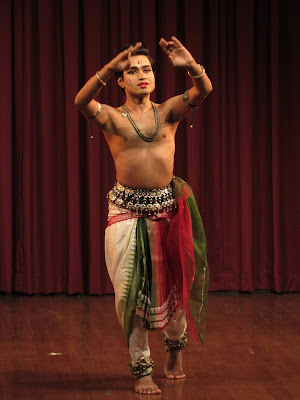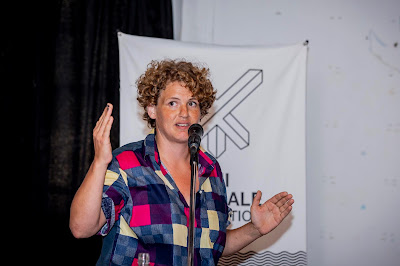New Delhi, September 11: Hindustani classical vocalist Shatavisha Mukherjee and Odissi dancer Madhur Gupta were chosen to perform under The Raza Foundation’s Aarambh series aimed at providing a platform for promising young Indian artists from classical music and classical dance.
Aarambh, launched in August 2017, invites two artists from different genres from various parts of India every month to perform before discerning audiences at two different venues in Delhi. In the first season (2017-2018), a total of 25 artists were given two venues to showcase their art. The Raza Foundation organizes and fully supports the performances of the artists in keeping with the mission of its Founder, the late artist, S.H Raza, to support and nurture young talented artists.
 |
Kolkata based vocalist Shatavisha Mukherjee and Madhur Gupta, a Delhi based Odissi dancer gave their second performance as part of thr tenth edition of Aarambh at Triveni Kala Sangam, New Delhi. Their first performance took place at Government Girls Senior Secondary School (Pandara Park, New Delhi) and Mother’s International School (New Delhi) earlier in the morning.
The Hindustani classical vocalist, Shatavisha Mukherjee began her musical journey at the age of three under the tutelage of Pt. A Kannan. She then went on to pursue her education in music under Pt. Ulhas Kashalkar at ITC Sangeet Research Academy. She pursued dual Masters in Music and in History from Jadavpur
University. Accompanied by Pt. Vinod Lele on the tabla, Shri Vinay Mishra on the harmonium and Umesh Soni on the tanpura, the young vocalist began the evening with an ode to the monsoons through Raag Malhaar followed by a bandish, ‘Saiyan mora re, main toh boli’ and ended the evening with the melodious composition ‘Naina mora re’.
Odissi dancer, Madhur Gupta began his initial training in Kathak with Padma Vibhushan Pt. Birju Maharaj. He then went to pursue Odissi under Guru Madhavi Mudgal. After being trained in the fundamentals by Padma Shri Madhavi Mudgal at Gandharva Mahavidyalaya and a galaxy of star gurus at Rudrakshya Foundation in Orissa, Madhur is currently in advanced training under the renowned danseuse, Guru Sharon Lowen in New Delhi. He began his recital with a choresgraphy of his creation, a Kamakshi Mangalcharan invocating
Goddess Kamakshi, the wish fulfilling benevolent Devi. The second composition, a Champu choreographed by his Guru Sharon Lowen, was an oriya abhinayacomposition was a satire on Krishna’s anxious reaction to getting a glimpse of Radha by the Sakhi.
The second day of Aarambh shall take place at Alliance Francaise (Delhi) and will feature Hindustani vocalist Ashish V Ranade and Kathak dancer Siddhi Goel.





